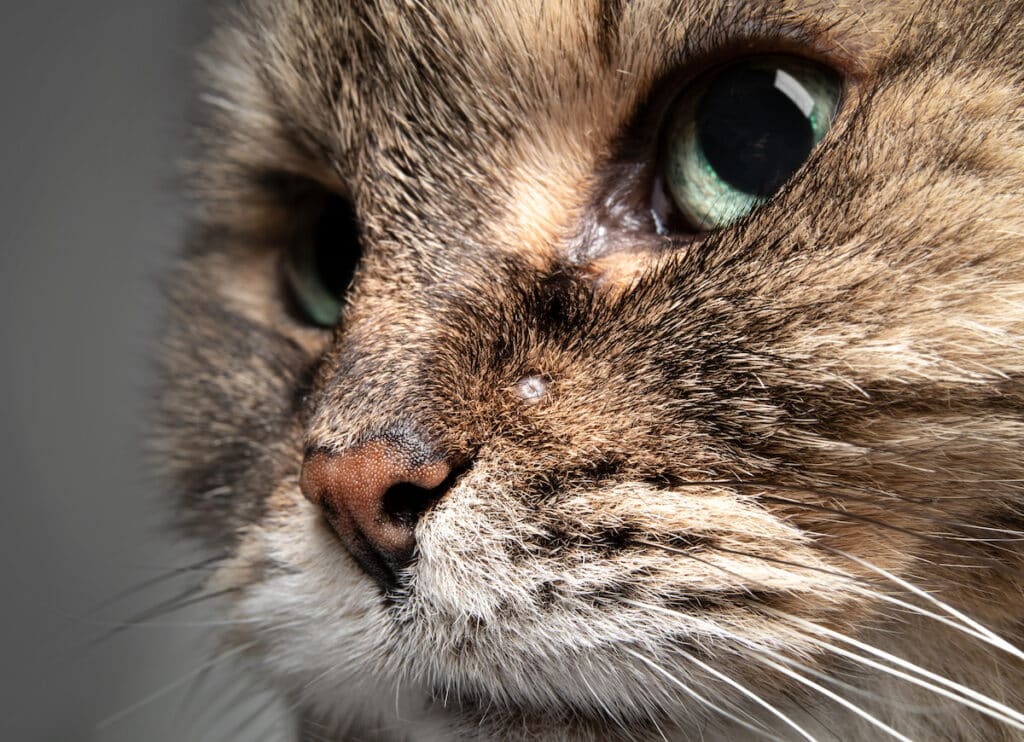Getting cat zits is a common problem for many people. They are caused by an overproduction of keratin. Fortunately, there are several ways to get rid of them.
Plastic food bowls
Using plastic food bowls for cat zits isn’t a great idea. Plastic bowls contain bacteria and can cause your cat to develop skin problems. These can range from mild to severe, and can result in infection.
The best way to avoid this problem is to wash your cat’s food bowls and water bowls on a regular basis. Using a vet-approved wipe can also be helpful. You’ll want to look for a bowl that’s non-porous, because bacteria can build up and aggravate your kitty’s skin.
If you can’t avoid plastic, you might want to switch to a ceramic or stainless steel bowl. These bowls are easier to clean, and don’t trap bacteria like plastic does. You might also try using a warm compress on the affected area to ease the pain.
You can also use a chlorhexidine antibacterial wash on the affected area a couple of times a day. This will help clear up the acne, and could even help reduce the number of breakouts your kitty has.
Excessive production of keratin
Various factors play a role in follicular keratinization. They include poor hygiene, allergies, and genetic predisposition.
Hair follicles that are clogged with excess keratin can form blackheads and pustules. These pustules are characterized by redness, swelling, and inflammation. They may also contain bacteria, which may lead to secondary infections.
The primary goal of treatment for cat acne is to prevent the excessive production of sebum. Treatment may involve a combination of antibacterial topical treatment, antifungal topical treatment, and oral antibiotics. The vet will also perform blood tests and urine tests to detect bacterial infections.
For mild cases, antibacterial topical treatment is usually enough. The area will be cleaned with shampoo containing benzoyl peroxide. For moderate to severe cases, oral antibiotics may be used. Alternatively, the vet may take a skin scraping or biopsy.
The most common symptom of feline acne is the formation of blackheads. Blackheads are small, dark, bumpy spots that form on the chin. The cat may rub its chin if it feels itchy.
Auto-immune disorder
Identifying and treating an autoimmune disease is a daunting task. Depending on the nature of the autoimmune disease, it can be a life-threatening condition. However, it can often be controlled with medications and extensive diagnostic tests.
An autoimmune disease is a condition that causes the body’s immune system to attack its own cells. These attacks cause damage to the body’s tissues and organs. The resulting symptoms are often subtle and difficult to detect.
An autoimmune skin disease can be caused by a variety of factors. Some of these include genetics, infectious agents, parasites, and heavy metal toxicity.
One of the more common autoimmune skin diseases in cats is called pemphigus. It causes painful blisters on the skin and mucous membranes. It can also cause fluid-filled sacs and ulcers. Typically, it causes only a minor problem, but it can be a fatal condition.
Another autoimmune skin disease is called discoid lupus erythematosus. It affects the skin around the eyes, ears, and nose. It can also be associated with other autoimmune diseases, including rheumatoid arthritis and Grave’s disease.
Treatment
Getting a cat zits treatment can help reduce the frequency of outbreaks. A veterinarian may prescribe antibiotic ointments and face wipes. If the acne is severe, the vet may recommend an anti-inflammatory drug such as steroid or anti-inflammatories.
Cats are prone to acne because their skin is oily and doesn’t have a coat to block dirt. The acne mainly occurs on the chin and lips.
The best way to prevent feline acne is to make sure your cat’s food bowl is clean and free of bacteria. Avoid plastic bowls, and use stainless steel or ceramic bowls. Clean the bowl after every meal. Clean it thoroughly with soap and water every day.
A warm compress can help loosen up the pore and increase circulation. This will promote healing and decrease swelling.
Your veterinarian may also recommend topical antibacterial wash, anti-inflammatories, or prescription topical medications. The vet will use sensitivity tests to determine which medications are best for your cat.
Topical treatment for acne involves reducing the excess production of sebum and keratin. Typically, antibacterial topical treatment involves shampoo and/or antibacterial wipes.














